When you think of peanuts, you likely envision the roasted kind, perhaps salted or honey-glazed, that come served up in bowls at social gatherings or found in snack aisles. However, before peanuts reach the roast, they start off in their raw form. Raw peanuts, just as they sound, are uncooked peanuts that retain their natural moisture content and can offer different nutritional benefits compared to their roasted counterparts.
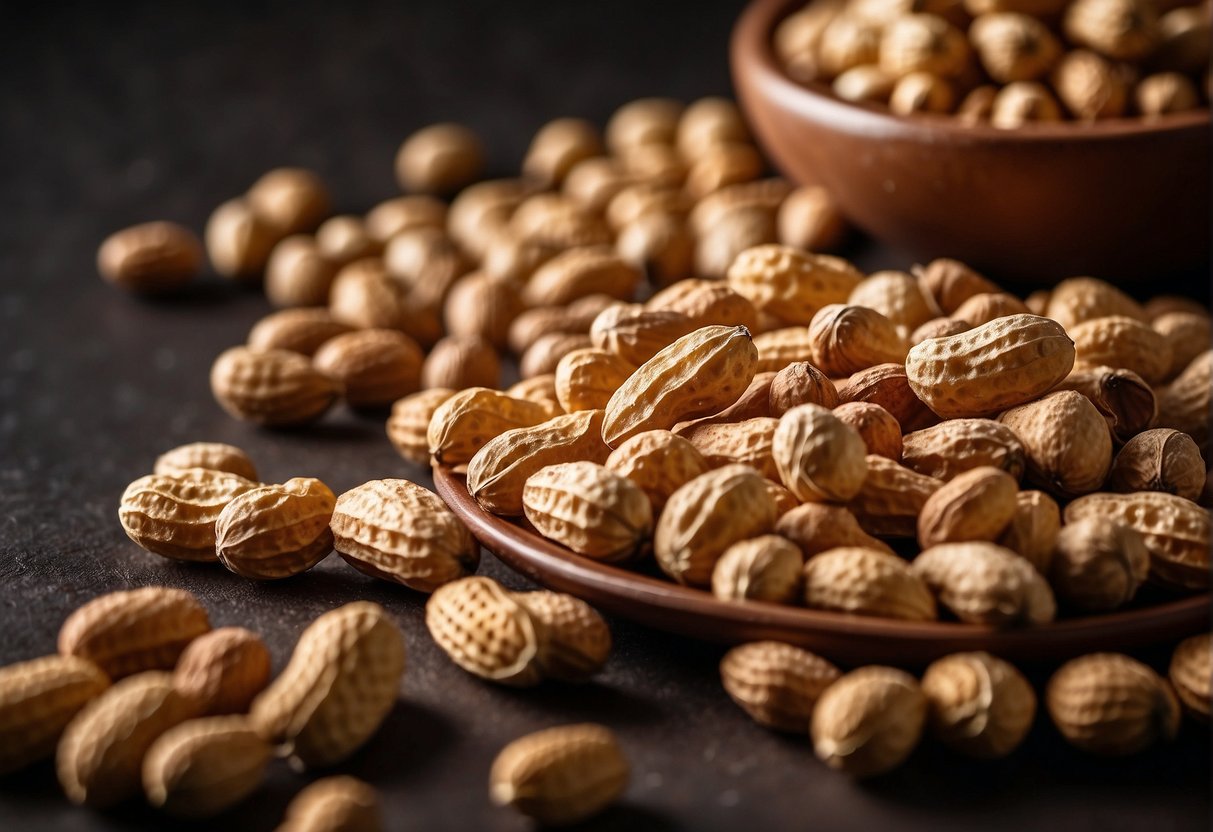
Roasting peanuts not only changes their texture and flavor but also affects their nutritional profile to some extent. While both raw and roasted peanuts pack a healthy dose of protein, fiber, and heart-healthy fats, the roasting process can alter levels of certain antioxidants and vitamins. If you’re curious about which type might align better with your dietary goals or simply wonder what sets them apart, it’s helpful to consider both the nutritional changes and the culinary applications that come with roasting peanuts.
Nutritional Comparison
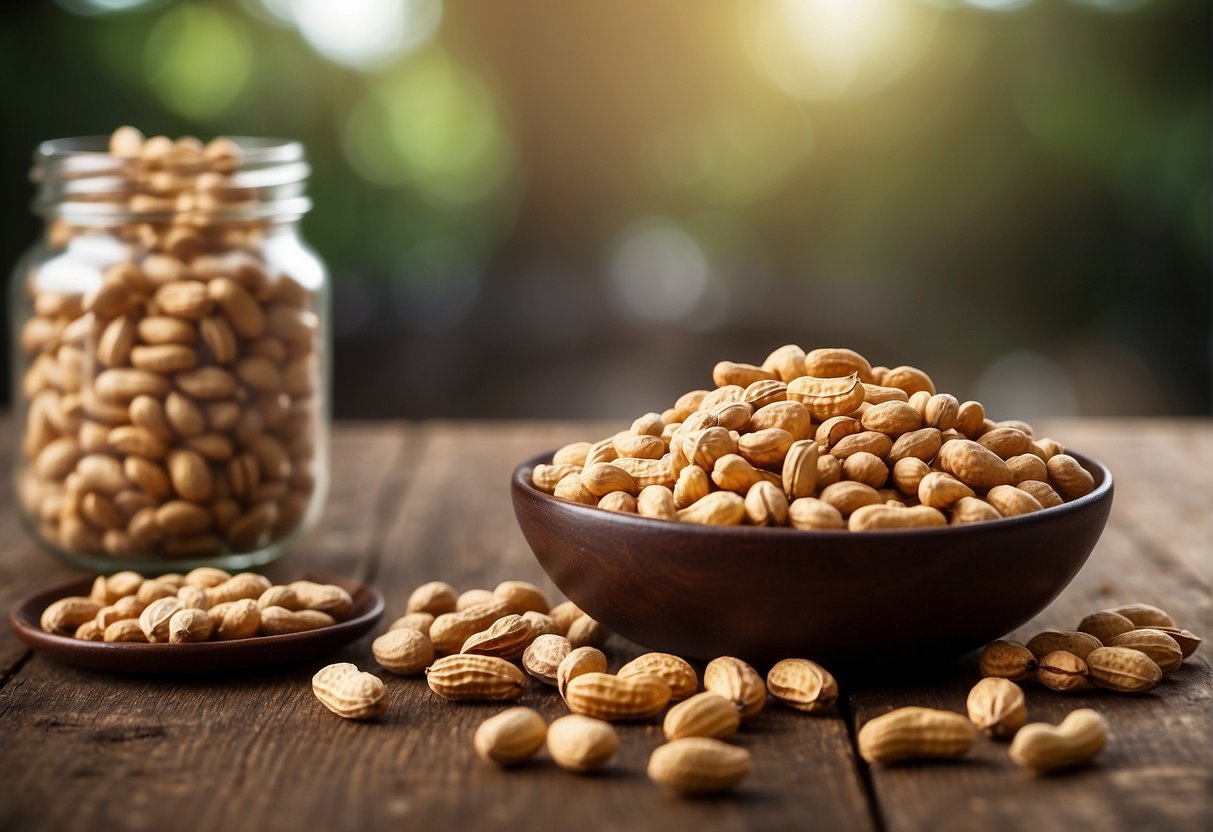
When considering raw versus roasted peanuts, you should remember that the nutritional content can vary slightly. It’s important to know how these differences might affect your dietary choices.
Protein and Fiber Content
Both raw and roasted peanuts offer a good source of protein and dietary fiber, essential for maintaining muscle health and aiding digestion. Here’s a quick look:
- Protein: About 7 grams per ounce
- Fiber: Approximately 2-3 grams per ounce
The roasting process doesn’t significantly change the protein and fiber content. However, it’s good to check the label, as flavored or seasoned roasted peanuts might have added ingredients that alter the nutritional profile.
Vitamin and Mineral Profile
The levels of vitamins and minerals can also differ slightly between raw and roasted peanuts. Roasted peanuts might have lower levels of certain vitamins due to degradation from the heat, but they still retain most of their mineral content.
Here are a few specific nutrients you’ll find:
- Vitamin E: An antioxidant, important for skin and immune health
- Manganese: Critical for bone development and metabolic function
- Magnesium, Phosphorus, Potassium, Iron, and Calcium: Important minerals for various bodily functions
The effect of roasting on vitamins like thiamin (B1), riboflavin (B2), and minerals remains minimal, so you can enjoy these nutrients whether your peanuts are raw or roasted.
Fat Types and Caloric Value
The types of fatty acids in peanuts contribute to their overall caloric value:
- Fat: Primarily consists of monounsaturated and polyunsaturated fats, which are considered heart-healthy.
- Saturated Fat: Lower amounts present than unsaturated fats.
Caloric values are similar between raw and roasted peanuts, with an ounce generally containing around 160-170 calories. Keep in mind that added oils and seasoning in roasted peanuts can increase overall fat content and calories. Although peanuts contain fat, they do not contain cholesterol, as it’s only found in animal products.
Health Benefits and Risks
Peanuts, whether raw or roasted, offer you various health benefits due to their content of antioxidants and essential nutrients. However, it’s important to consume them in moderation to manage dietary considerations and avoid potential risks.
Reducing Heart Disease Risk
Raw peanuts are rich in antioxidants, which can help in reducing your risk of heart disease. The American Heart Association recommends nuts as part of a heart-healthy diet. Eating peanuts may contribute to:
- Lowering cholesterol: Peanuts contain monounsaturated and polyunsaturated fats, which are effective in lowering bad cholesterol levels.
- Prevention of stroke: The resveratrol in peanuts has been associated with reduced risk of stroke due to its ability to modify molecular pathways in blood vessels.
Dietary Considerations and Weight Gain
Including peanuts in your diet should align with the Dietary Guidelines for Americans which emphasize moderation. Consider these factors:
- Calories: Raw and roasted peanuts are calorie-dense; overconsumption can lead to weight gain.
- Obesity and diabetes: Regular consumption of peanuts in high quantities without adjusting your calorie intake can increase the risk of obesity and diabetes.
Impact on Blood Pressure and Cholesterol
Both raw and roasted peanuts have nutrients that may impact your blood pressure and cholesterol levels.
- High blood pressure: Peanuts are a good source of magnesium, which can help in managing your blood pressure.
- Essential nutrients: Nutrients like niacin, which is present in peanuts, play a role in reducing cholesterol and thus promoting a healthy heart.
Remember to enjoy peanuts as part of a balanced diet to harness these health benefits while mitigating the risks.
Taste and Texture Experience
When you compare raw and roasted peanuts, your senses are greeted by distinct flavor notes and textural contrasts that can greatly influence your snacking experience or how you might use them in recipes.
Flavor Profile
Raw peanuts have a fresh, earthy taste, with a subtle sweetness that’s more pronounced in their natural state. As a comparison:
| Peanuts | Flavor Notes |
|---|---|
| Raw | Earthy, subtly sweet, fresh vegetal notes |
| Roasted | Rich, caramelized, more complex sweetness |
In contrast, roasting amplifies the flavor of peanuts, creating a deeper, rich taste that often hints at a slight caramelization. The roasting process brings out a nuttiness that can enhance the flavors in dishes like satay sauces or homemade peanut butter.
Physical Texture Differences
The texture of peanuts is transformed significantly through roasting. Your initial bite into a raw peanut might feel somewhat soft and yielding. They have a higher moisture content, resulting in a dense and somewhat chewy texture.
| Texture | Raw Peanuts | Roasted Peanuts |
|---|---|---|
| Feel | Soft, dense | Crunchy, brittle |
| Moisture | Higher | Reduced |
Roasted peanuts, on the other hand, become crunchy and brittle—perfect for a satisfying snack. The reduced moisture content from the heat leads to a crispier bite, which is optimal for adding texture to dishes or achieving the perfect consistency when making peanut butter.
Cooking and Preparation Methods
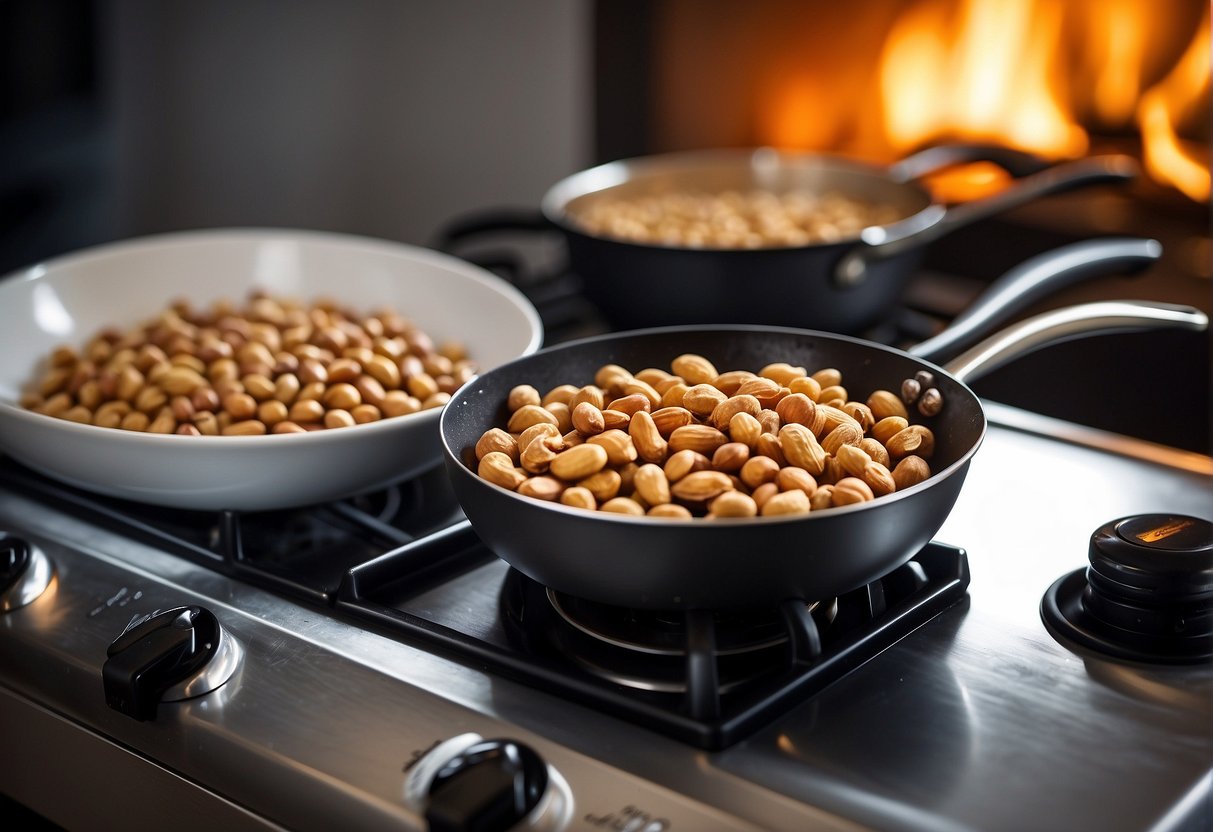
When you’re looking to transform raw peanuts into a savory snack or culinary ingredient, knowing the best cooking and preparation methods is key. Both home cooking techniques and the effects of high heat preparation play a significant role in flavor and safety.
Home Cooking Techniques
You can prepare peanuts in various ways at home, each yielding different flavors and textures. For frying, heat your peanuts in hot oil until they turn golden and aromatic, making sure to monitor continuously to avoid burning. If you prefer a dry approach, try oven-roasting; simply spread your peanuts on a baking sheet and roast at 350°F for 15-20 minutes, or until they’ve reached your desired level of doneness. It’s essential to stir them occasionally to ensure even cooking.
For a healthier alternative, consider dry roasting in a skillet on medium heat, stirring frequently until they’re evenly browned. This method skips added oils, potentially reducing your intake of fats.
- Oil Roasting: Involve coating the peanuts lightly with oil and roasting at 350°F (175°C) for 15-20 minutes.
- Dry Roasting: Involve cooking in a pan without oil, stirring frequently, until golden brown.
Effects of High Heat Preparation
High heat methods like frying and roasting can affect peanuts’ nutritional value and safety. It’s important to avoid overcooking as burnt peanuts may contain carcinogens. On the other hand, properly cooked and pasteurized peanuts are safer to eat as the process eliminates potential bacteria. Avoiding excessive temperatures while maintaining enough heat to pasteurize requires a balance. The key is to cook peanuts to the point where they’re safe and delicious without crossing into unsafe temperature ranges that may create harmful compounds.
- Frying: Use a thermometer to ensure oil temperature stays between 350°F and 375°F (175°C-190°C).
- Roasting: Preheat your oven and roast peanuts no longer than 20 minutes, checking color and aroma as indicators.
Storage and Shelf Life
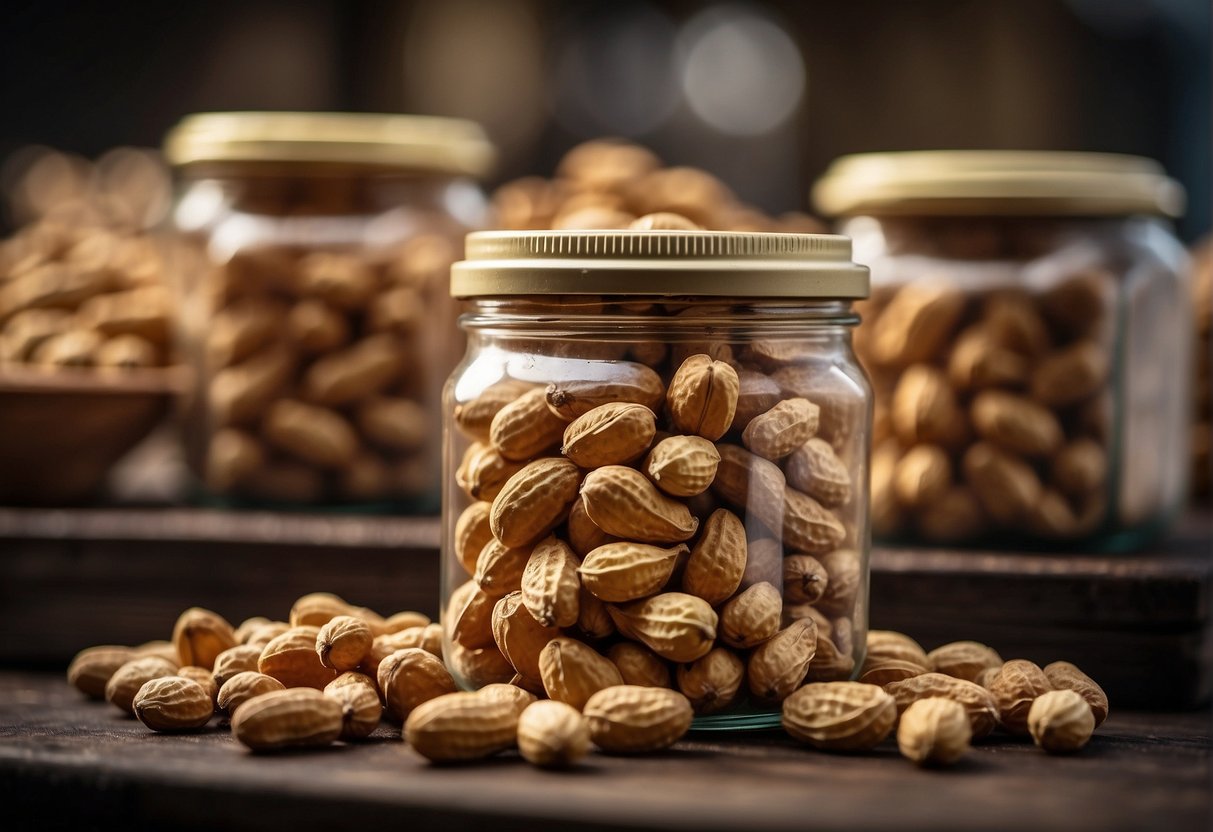
Storing peanuts properly can significantly extend their shelf life, ensuring you enjoy their taste and nutritional benefits longer. The storage environment impacts both raw and roasted peanuts differently.
Best Practices for Preservation
Raw Peanuts:
- Temperature: Keep your raw peanuts in a cool, dry place, ideally at a temperature of about 60-70°F.
- Containers: To preserve freshness, store them in airtight containers to prevent moisture and pests from getting in.
- Peanut Skins: Leaving the skins on can help protect the peanuts’ natural oils, contributing to a longer shelf life.
Roasted Peanuts:
- Sealed Packaging: Once opened, transfer the peanuts to a sealed container to maintain their crispness.
- Refrigeration: If you won’t consume them quickly, consider refrigerating roasted peanuts to extend freshness.
Impact of Storage on Quality
Raw Peanuts:
- Storing raw peanuts incorrectly may lead to rancidity or mold growth, particularly if exposed to warm temperatures or humidity.
- Exposure to light and air can degrade the quality, so opt for containers that minimize these factors.
Roasted Peanuts:
- The oils in roasted peanuts can become rancid if stored at room temperature for too long. Keep an eye on the expiration date and use your senses to judge quality.
- If the peanuts start to taste off or smell unusual, it’s time to discard them.
Proper storage not only maintains the quality but also maximizes the enjoyment of your peanuts!
Frequently Asked Questions
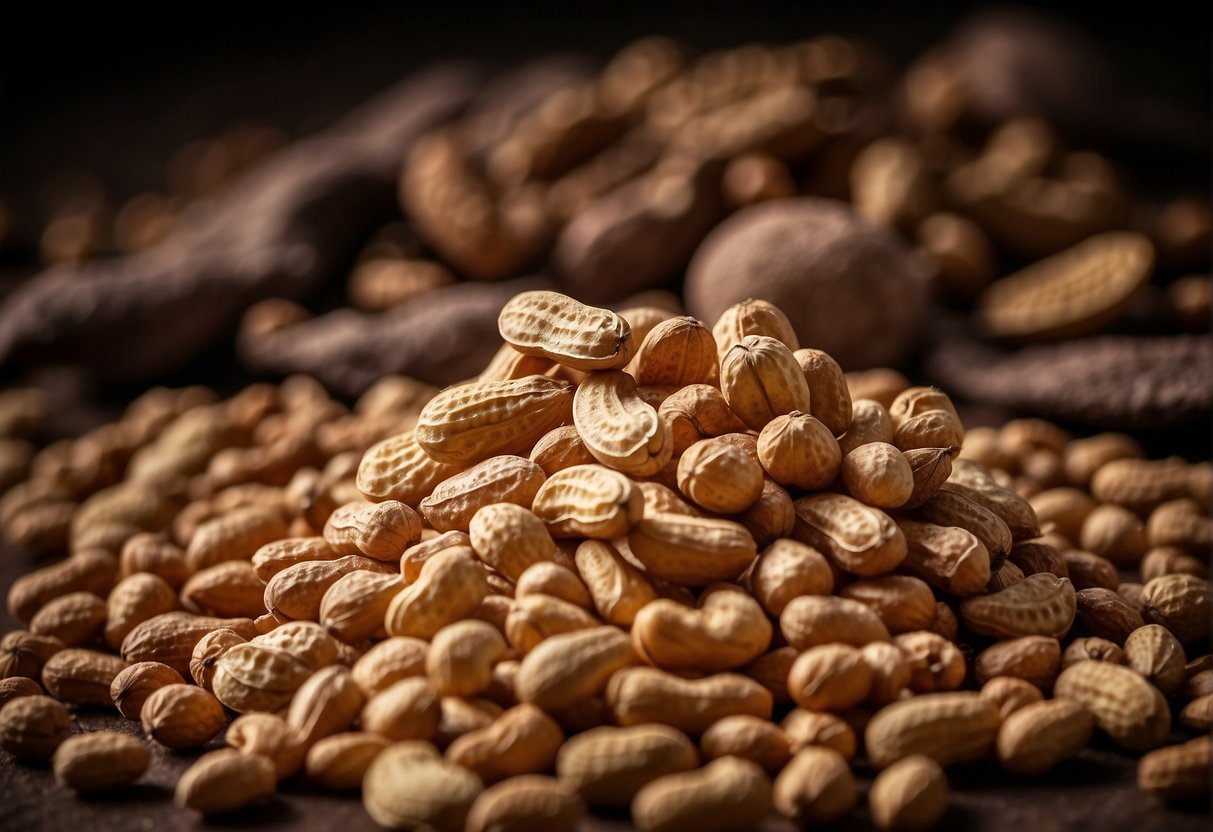
When comparing raw and roasted peanuts, it’s important to consider variations in nutrient content, potential health benefits, and taste profiles. This section tackles common inquiries about these differences.
What nutritional differences exist between raw and roasted peanuts?
Raw peanuts have slightly higher levels of certain vitamins and minerals that may degrade with heat. However, roasted peanuts often contain added oils and salt, which can affect their overall nutritional profile.
Does the protein content change when peanuts are roasted?
The protein content in peanuts remains relatively stable whether they are consumed raw or roasted. The roasting process does not significantly alter the amount of protein.
Are any nutrients lost during the roasting process of peanuts?
Roasting peanuts at a high temperature can lead to a minimal loss of certain heat-sensitive nutrients, such as B vitamins and antioxidants.
What are the health reasons for choosing raw peanuts over roasted ones?
You may opt for raw peanuts to avoid the added fats and salts often found in roasted peanuts. Also, raw peanuts preserve more of their natural vitamins and antioxidants.
How does the taste of almonds change when they are roasted versus raw?
The taste of almonds significantly changes when roasted; they develop a richer, more caramelized flavor compared to their raw counterparts, which have a milder, slightly sweet taste.
Among various nuts, which is considered the healthiest option to consume?
While each nut has its unique nutritional benefits, raw nuts, in general, tend to be the healthiest option as they retain the full spectrum of their original nutrients without additional oils or salt.
